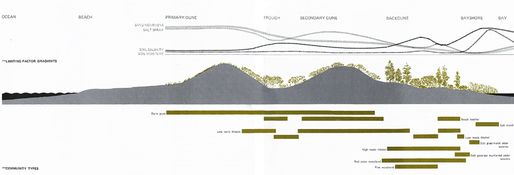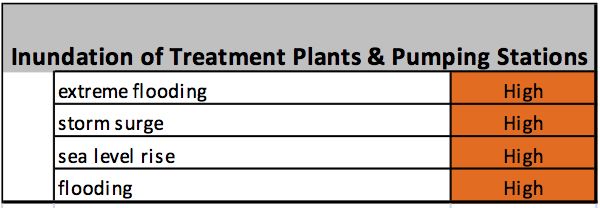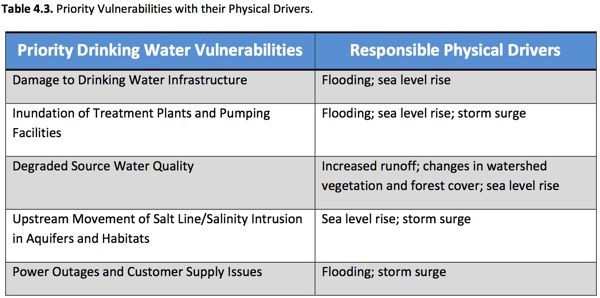A Dirge To McHarg and Mumford – Who Are Rolling Over in Their Graves
“Ignorance is compounded with anarchy and greed to make the raddled face of the Jersey shore.”
“… there came retribution.”
Sandy Destruction: “Man Made, Foreseen, Preventable”
My heart breaks.
I moved recently, so had the opportunity to revisit many important books in my library – one of which I am having the joy of re-reading and think of today: Ian McHarg’s 1967 classic: “Design with Nature” (take a look at some visuals of that work).
The introduction to McHarg’s book was written by another towering favorite of mine, Lewis Mumford, whose introduction brilliantly framed the context for the book:
There is still only a small shelf of books that deals with man’s relation to his environment as a whole: not only with the so called physical universe of the planets and the stars, the rocks and soil and the seas, but with the creatures that inhabit the earth – all the forces and animate beings that have helped to make man himself what he is. This part of man’s knowledge of himself was slow to develop; for the early Greek thinkers tended either to examine man in isolation, or to examine nature without noting the presence of man: as if any part of it could be understood except through the instruments and symbols that the human mind provided, for purposes in one way or another furthered man’s own existence.
Design With Nature is a notable addition to the handful of important texts that begin, at least in the Western tradition, with Hippocrates’ famous medical work on Airs, Waters, and Places: the first public recognition that man’s life, in sickness and in health, is bound up with the forces of nature, and that nature, so far from being opposed and conquered, must rather be treated as an ally and friend, whose ways must be understood, and whose counsel must be respected. […]
One cannot predict the fate of a book such as this. But on its intrinsic merits I would put it on the same shelf that contains as yet only a handful of works in a similar vein, beginning with Hippocrates, and including such essential classics as those of Henry Thoreau, George Perkins Marsh, Patrick Geddes, Carl Sauer, Benton MacKaye, and Rachel Carson. This is not a book to be hastily read and dropped; it is rather a book to live with, to absorb slowly, and to return to, as one’s own experience and knowledge increases. Though it is a call to action, it is not for those who believe in “crash programs” or instant solutions: rather, it lays a fresh course of stones on a ground plan already in being. Here are the foundations for a civilization that will replace the polluted, bulldozed, machine-dominated dehumanized, explosion-threatening world that is even now disintegrating and disappearing before our eyes. In presenting us with a vision of organic exuberance and human delight, which ecology and ecological design promise to open up for us, McHarg revives the hope for a better world. Without the passion and courage and confident skill of people like McHarg that hope might fade and disappear forever. [emphases mine]
McHarg begins his book with a chapter of personal biography and philosophy:
This book is a personal testament to the power and importance of sun, moon, stars, the changing seasons, seedtime and harvest, clouds, rain, rivers, the oceans and the forests, the creatures and the herbs. They are with us now, co-tenants of the phenomenal universe, participating in that timeless yearning that is evolution, vivid expression of time past, essential partners in survival and with us now evolved in the creation of the future.
Our eyes do not divide us from the world, but unite us with it. Let this be known to be true. Let us then abandon the simplicity of separation and give unity its due. Let us abandon the self-mutilation which has been our way and give expression to the potential harmony of man-nature. The world is abundant, we require only a deference born of understanding to fulfill man’s promise. Man is that uniquely conscious creature who can perceive and express. He must become the steward of the biosphere. To do this he must design with nature.
Ironically, his first substantive chapter to apply that lofty design philosophy is focused on a study of the NJ shore!
Titled “Sea and Survival“, McHarg presents fundamental dynamics and ecology of the barrier island, explaining clearly the relationships between ocean; beach; primary, secondary and back dunes; the bayshore and the bay.
McHarg concludes this presentation with planning principles and “positive recommendations” about the development and protection of the shore, a call for ecological based planning:
Sadly, in New Jersey, no such planning principles have been developed. While all the principles are familiar to botanists and ecologists, this has no effect whatsoever upon the form of development. Houses are built upon dunes, grasses destroyed, dunes breached for beach access and housing; groundwater is withdrawn with little control, areas are paved, bayshore is filled and urbanized. Ignorance is compounded with anarchy and greed to make the raddled face of the Jersey shore.
McHarg then presents the predictable outcome of this ignorance and greed:
From the fifth to the eighth of March 1962 , there came retribution. A violent storm lashed the entire northeast coast from Georgia to Long Island. For three days sixty-mile-an-hour winds whipped the high spring tides across a thousand miles of ocean. Forty-foot waves pounded the shore, breached the dunes and filled the bay, which spilled across the islands back to the ocean. When the storm subsided, the extent of the disaster was clear. Three days of storm had produced eighty million dollars worth of damage, twenty-four hundred houses destroyed or damaged beyond repair, eighty-three hundred houses partially damaged, several people killed and many injured in NJ alone. Fires subsequently added to this destruction; roads were destroyed, as were utilities.
Fast forward 50 years – welcome Hurricane Sandy and the know-nothings running corporate America. (XPN is playing Allman’s “Stormy Monday” as I write this – chills all up and down my spine!)
So, in a dirge to McHarg and Mumford (and as the media again swings and misses at the real story), today we repost this July 2012 post, which was done in the wake of the Monmouth water line collapse. The circumstances clearly differ, but the underlying message is the same.
For NJ American Water, DEP, BPU, and Sustainable Jersey
Man Made, Foreseen, Preventable
“Rosebud”
Inundation of Treatment Plants and Pump Stations/Damage to Drinking Water Treatment Infrastructure
Regional Level Action ~ Update 100‐year and 500‐year Floodplain Maps
Regardless of the quality of science available to determine the impacts of climate change on physical conditions in the Basin, specific inundation risks can only be effectively evaluated with updated shoreline topographical information.
Utility Level Action ~ Evaluate Placement of New Construction and Materials Resiliency
Drinking water utilities should evaluate the placement of new construction, monitoring equipment, and other infrastructure to avoid low‐lying areas or locations vulnerable to storms and other harsh weather conditions. Ranges of potential flooding should be evaluated using the best available science. Adaptations can be refined as more information becomes available about specific impacts of sea level rise, potential increases in streamflow and other changes in the basin that pose a risk to drinking water utilities. Utilities should also evaluate and incorporate use of more resilient construction materials during day‐to‐day upgrades.
Increased Spills and Accidents/Power Outages and Customer Supply Issues
Regional Level Action ~ Support the XXXXXXXX Regional Early Warning System
The XXXXXXX Regional Early Warning System notifies drinking water utilities in the event of accidental contamination in certain areas of the XXXXXXX Basin. The system provides critical information to utilities so they can respond swiftly and appropriately to unexpected threats. Efforts to expand and improve this system must be supported to ensure the continued protection of drinking water supplies in the Basin.
Addresses: Increased Spills and Accidents
Involves: EPA,XXXX, state government, USCG, municipal government, Offices of Emergency Management
Utility Level Action ~ Evaluate Emergency Response Protocols
At the same time that regional emergency response protocols are being evaluated, water suppliers should conduct assessments of their individual utility emergency response protocols to identify vulnerabilities, fill gaps and develop needed contingency and customer communication plans. Revisiting emergency response plans can help protect utilities in the event of unexpected accidents or spills which may become even more prevalent with changing physical conditions in the Basin.
Addresses: Increased Spills and Accidents, Power Outages & Customer Supply Issues
Utility Level Action ~ Evaluate Customer Notification Needs and Protocols
Analyses show that XXXXXX and XXXXXX are steadily increasing in the main stem XXXXXXX most likely because of increased development, road salts application, and inputs from wastewater and drinking water treatment. These parameters are not removed during conventional drinking water treatment and could pose problems for special needs customers such as dialysis patients and certain industries. Impacts of climate change on conditions in the Basin may exacerbate rising salinity. Water utilities should evaluate current salinity levels to determine if more frequent notification to special needs customers is required.
Rosebud: name that Report







